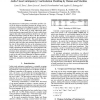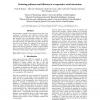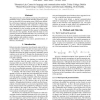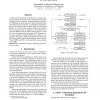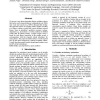73
Voted
INTERSPEECH
2010
14 years 7 months ago
2010
This study investigates phrase-medial vowel devoicing in European French (e.g. /ty p
90
Voted
INTERSPEECH
2010
14 years 7 months ago
2010
The phenomenon of anticipatory coarticulation provides a basis for the observed asynchrony between the acoustic and visual onsets of phones in certain linguistic contexts. This ty...
INTERSPEECH
2010
14 years 7 months ago
2010
One successful approach to language recognition is to focus on the most discriminative high level features of languages, such as phones and words. In this paper, we applied a simi...
90
Voted
INTERSPEECH
2010
14 years 7 months ago
2010
Natural prosody is produced by an articulatory system to convey communicative meanings. It is therefore desirable for prosody modeling to represent both articulatory mechanisms an...
68
Voted
INTERSPEECH
2010
14 years 7 months ago
2010
We developed a cooperative time-sensitive task to study vocal expression of politeness and efficiency. Sixteen dyads completed 20 trials of the `Maze Task', where one partici...
INTERSPEECH
2010
14 years 7 months ago
2010
This paper describes our recent work on extending the punctuation module of automatic subtitles for Portuguese Broadcast News. The main improvement was achieved by the use of pros...
INTERSPEECH
2010
14 years 7 months ago
2010
This paper presents a new method of extracting LF model based parameters using a spectral model matching approach. Strategies are described for overcoming some of the known diffic...
INTERSPEECH
2010
14 years 7 months ago
2010
In our barge-in-able spoken dialogue system, the user's behaviors such as barge-in timing and utterance expressions vary according to his/her characteristics and situations. ...
INTERSPEECH
2010
14 years 7 months ago
2010
A novel Statistical Approach for F0 Estimation, SAFE, is proposed to improve the accuracy of F0 tracking under both clean and additive noise conditions. Prominent Signal-to-Noise ...
71
Voted
INTERSPEECH
2010
14 years 7 months ago
2010
We present a new phone-dependent feature weighting scheme that can be used to map articulatory configurations (e.g. EMA) onto vocal tract spectra (e.g. MFCC) through table lookup....

